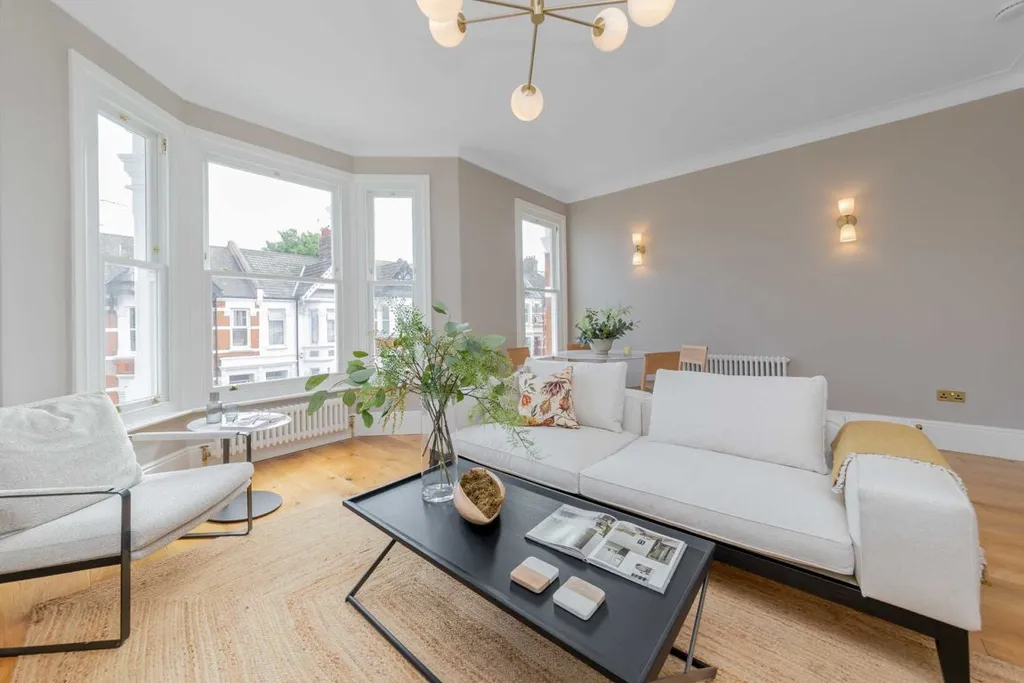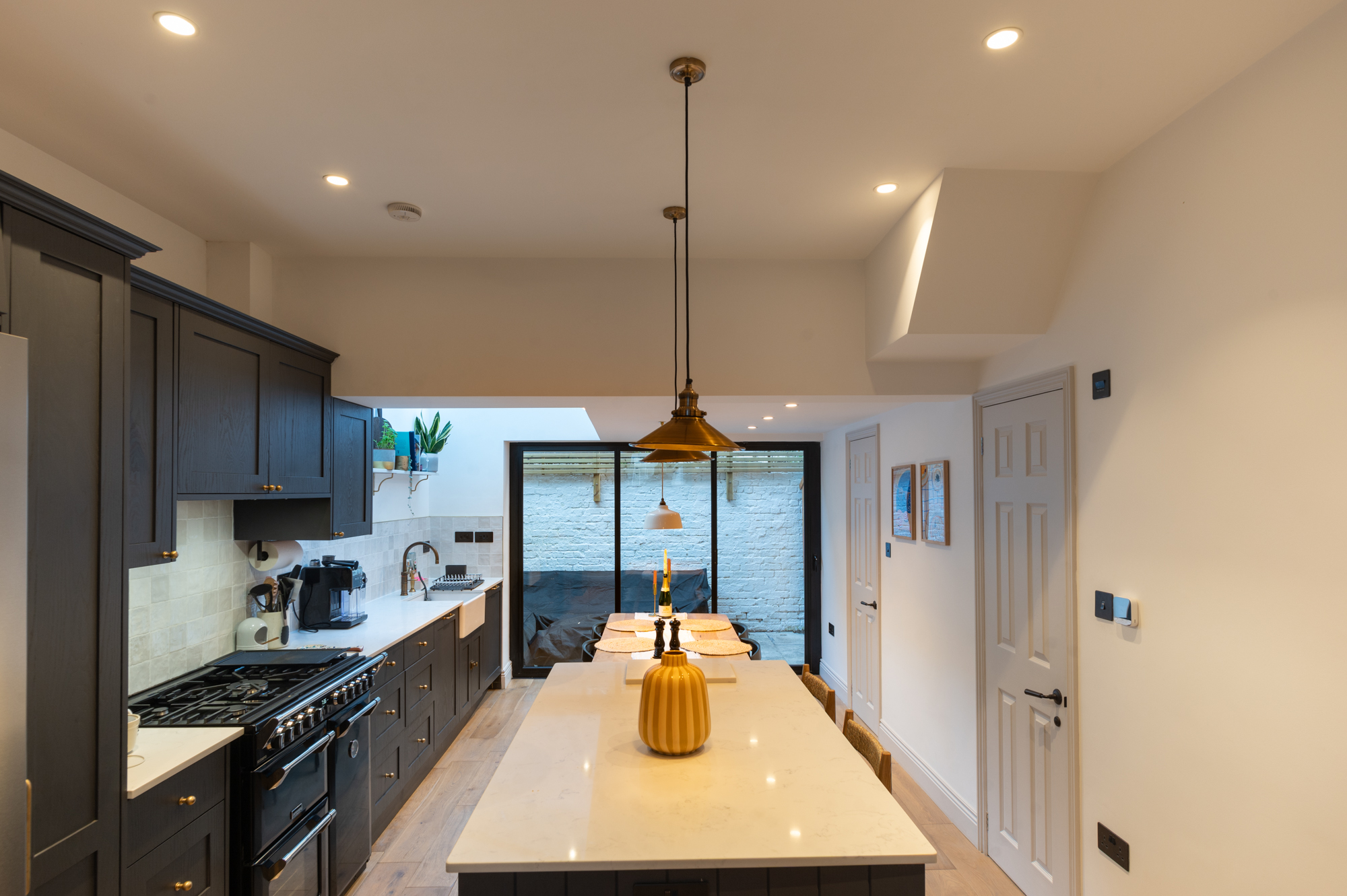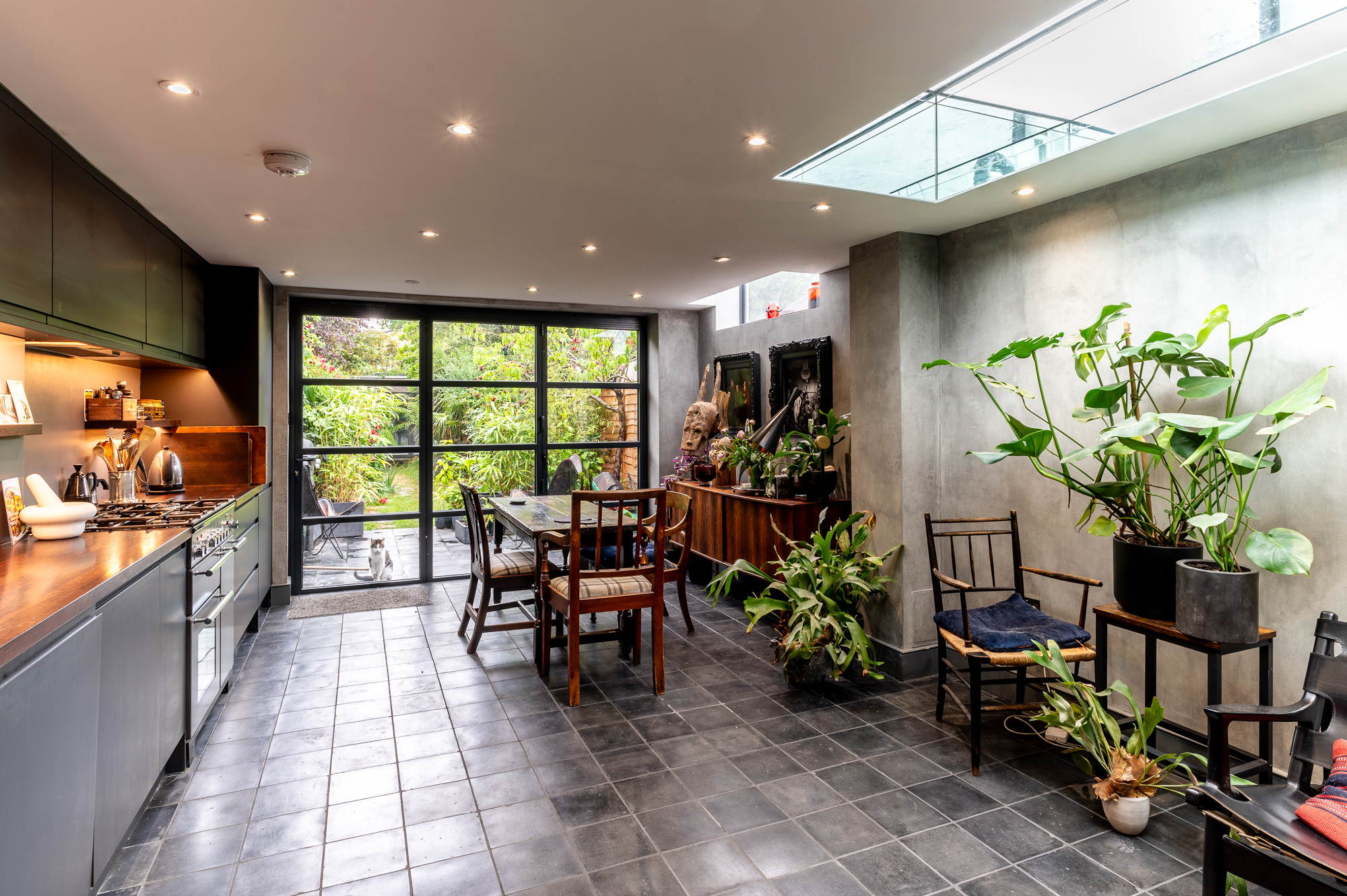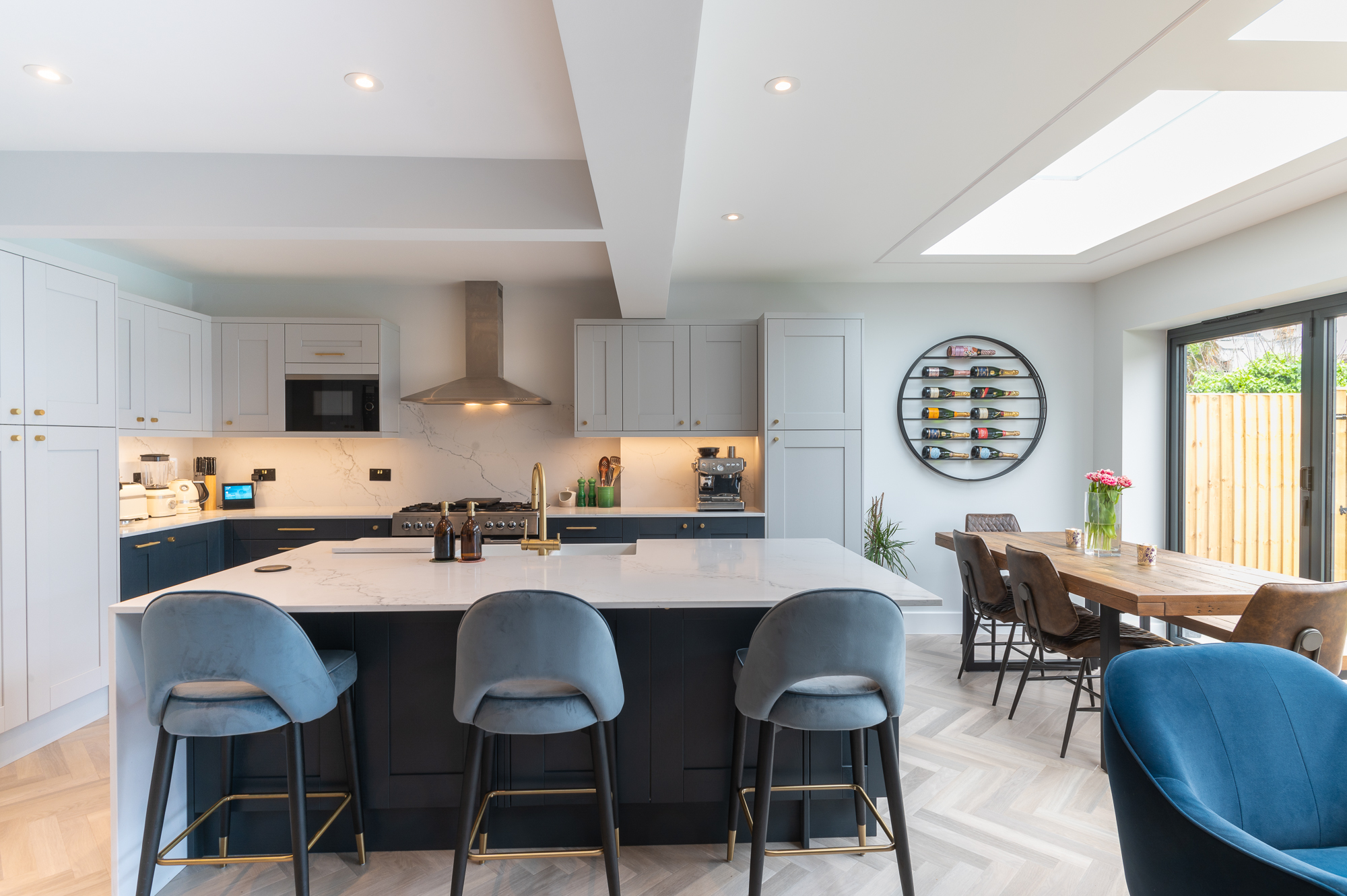Merging Space, Elegance, and Style to Design the Ultimate 1930s Semi Hip to Gable Loft Conversion
Your 1930s home is a dream property. Large gardens, expansive interiors, and a touch of history to boot.
To further enhance their appeal, they are also ideally suited for a hip-to-gable style loft conversion.
These conversions are a great way to add a bit of character, space, and design to your home without sacrificing your garden area. To put it simply, you are able to achieve the absolute form of home improvement and expand your living area, all while adding substantial value to your already-treasured home.
A loft conversion is a simple and cost-effective solution to adding space and value to your home.
It enables you to utilise the awkward and ill-used loft space and transform it into beautiful bedrooms, spacious bathrooms, or cosy study nooks; all of which substantially increase the value and square footage of your home.
The spacious interiors of 1930s semi-detached homes make them excellent candidates for a loft conversion. But with a myriad of different design options available, it is difficult to select the perfect style that is in line with your home and lifestyle.
Some of the most popular types of loft conversions for semi-detached homes include:
Roof Light Conversions
Often referred to as Velux conversions, roof light conversions are the simplest, and therefore the cheapest, type of loft conversion design. Due to this, they generally do not require planning permission.
Roof light conversions involve transforming the roof space into an additional room by installing skylight windows to the pitch of the existing roof, along with floor reinforcements, insulation, a staircase and connection to basic utilities.
Dormer Loft Conversions
Dormer loft conversions involve a vertical extension on the roof of the house to create more floor space as well as head room. These are popular extension options on semi-detached houses which have a sloping roof.
Dormer extensions are of two varieties based on the type of roof extension, namely flat roof and pitched roof dormers. Flat roof dormers add more living space whereas pitched roof dormers are viewed as the more attractive option.
Hip-to-Gable Loft Conversions
A more complex extension, hip-to-gable conversions involve transforming the slope of a hip roof into a gable-style roof with a vertical wall.
This transformation adds considerable floor space and head room allowing the creation of an additional room within.
Mansard Conversions
The most complex type of loft conversion, mansard conversions add incredible living space within semi-detached, detached, and terraced homes.
Mansard conversions are typically constructed at the rear part of the house and involve altering the structure of the existing roof to create a flat roof with a sloping wall.
Most loft conversions fall under permitted developments and therefore, do not require planning permission. However, for a loft conversion to qualify as a permitted development, it must meet certain criteria and specific limitations. These include:
- The property must not be listed or located in a conservation area
- The loft conversion must not exceed the height of the existing roof
- The loft conversion must not include balconies, verandas, or raised platforms
- Side-facing windows must be obscure glazed
- Volume of enlargement must not exceed the original roof space by more than 40 cubic metres for terraced houses
If the loft conversion does not fall under permitted developments then planning permission will be required. The process for securing planning permission involves submitting a comprehensive application including detailed plans of the proposed design, and may take up to 8 weeks for approval.
Due to their shared walls, semi-detached properties may, however, require party wall agreements. These must be in place before the build can commence to avoid any legal disputes in the future.
A hip-to-gable conversion involves transforming the slope of a hip roof into a gable-style roof with a vertical wall. This makes them particularly suitable for detached and semi-detached properties and bungalows which feature a sloping side roof.
Hip-to-gable roof designs involve considerable structural work and therefore may require planning permission and can be expensive to construct.
However, their aesthetic appeal, and the incredible amount of interior space they help create, make them an excellent investment.
Best of all? They offer countless options and interesting possibilities in how they are utilised. And while their use often depends on the amount of space created within, and its integration with the rest of the structure, some innovative ideas for the newly converted loft include:
- Bedrooms
- Bathrooms/ En-suites
- Home offices
- Library/ Study corners
- Playrooms
- Home gyms
- Walk-in wardrobes
With feature walls, bespoke interiors, and fabulous views, it is also easy to make the newly-created space into one that perfectly complements your individual style.
The loft space can be further optimised by:
- The installation of cleverly-placed windows to maximise the natural light that enters
- Converting awkward corners into useful storage spaces with the addition of shelves
- Arranging furniture to match the head room requirement for each area
Due to the relative complexity of hip to gable loft conversions (which involves stripping off most of the underlay of the existing roof, and installing new rafters, battens, underlay, and ridge beams to form a new gable), these conversions can cost between £40,000 to £80,000.
Their cost is also dependent on a number of other factors such as:
- The size of the conversion
- Building materials
- Location
- Applications for planning permission and other approvals
- Specialists’ fees
- Fittings and fixtures
However, as loft conversions can increase the value of a property by up to 20%, it is entirely possible to make up the cost of the conversion by the value it adds to a property.
Loft conversions on semi-detached homes can add incredible space and value to your home provided it is done right. Add to that the responsibility of a period property, and it becomes essential to ensure that the final build boasts of elegant design and a seamless finish. Naturally, this calls for the best builders in the business.
This is where Good Design and Build comes in.
Being the primary extension specialists, with a penchant for period homes, the team at Good Design and Build have decades of experience in constructing exceptional extensions and conversions. Our team comprises of architects, surveyors, builders, technicians, and project managers. This allows us to offer complete project management services from start to finish.
Our services include:
- Surveying the location
- Free consultations and cost quotations
- Comprehensive designing and planning of the proposed extension/ conversion
- Applying for and securing the requisite planning permission and building regulations approval
- Contractual work
- Daily on-site management of the build
This means that every aspect of the loft conversion is carefully overseen by us; allowing you to get the loft conversion of your dreams without the stress of the build.
Good Design and Build create bespoke beautiful lofts that add space and value to your home.
How we deliver projects
Our process is simple and divided into two distinct phases with separate contracts: Design and Build. As a client you only commit to one phase at a time depending on what stage of the process you are in. Each phase consists of three stages as described below.
1. Design
This is the kick-off point for your project. We carry out a complete architectural measured survey of the property. This allows us to create accurate CAD design drawings. This is followed by a design meeting to start discussing your ideas in more detail.
2. Planning
At this stage we finalise the designs with you and start preparing planning applications as needed. We place a high priority on ensuring that plans, designs and schedules are all based on a thorough and detailed understanding of planning guidelines. We co-ordinate with local authorities until the decision is made, and the planning approval is secured.
3. Technical
Once the planning consent is secured, we translate the design drawings into more detailed technical drawings for the purposes of building control and construction. This also includes specifications and structural calculations. At this stage, we will also submit to you our ‘no obligation’ quote for the build phase.
4. Pre-build
90% of our clients decide to stick with us after the design phase is completed. Once the build contract is signed, we kick off the process by making sure all the pre-build processes are complete. These include assistance with party wall agreements, Thames Water build over agreement, submitting building control application, and preparing method statements etc as needed. This stage ends with a pre-start meeting with your foreman before the actual build begins.
5. Build
One of our foremen will be dedicated to your project and will be on-site to manage everyday works. Our project managers will be overseeing the works to make sure they are completed to high standards, within your budget and on time. Throughout the process we will keep you updated with the progress and coordinate the works with third parties such as kitchen or flooring suppliers. We will also advise and guide you to choose any suppliers if needed.
6. Handover
As the build draws to finish, we will help to iron out any ‘snags’ to make sure everything is completed to your satisfaction. We will put together all necessary certificates such as gas, electricity and building control completion along with warranties for glazing, boiler etc. At the final completion meeting, we will hand you these documents, together with the keys to your house. Needless to say, you can contact us any time after this, if you want us to look at something.
This is the kick-off point for your project. We carry out a complete architectural measured survey of the property. This allows us to create accurate CAD design drawings. This is followed by a design meeting to start discussing your ideas in more detail.
At this stage we finalise the designs with you and start preparing planning applications as needed. We place a high priority on ensuring that plans, designs and schedules are all based on a thorough and detailed understanding of planning guidelines. We co-ordinate with local authorities until the decision is made, and the planning approval is secured.
Once the planning consent is secured, we translate the design drawings into more detailed technical drawings for the purposes of building control and construction. This also includes specifications and structural calculations. At this stage, we will also submit to you our ‘no obligation’ quote for the build phase.
90% of our clients decide to stick with us after the design phase is completed. Once the build contract is signed, we kick off the process by making sure all the pre-build processes are complete. These include assistance with party wall agreements, Thames Water build over agreement, submitting building control application, and preparing method statements etc as needed. This stage ends with a pre-start meeting with your foreman before the actual build begins.
One of our foremen will be dedicated to your project and will be on-site to manage everyday works. Our project managers will be overseeing the works to make sure they are completed to high standards, within your budget and on time. Throughout the process we will keep you updated with the progress and coordinate the works with third parties such as kitchen or flooring suppliers. We will also advise and guide you to choose any suppliers if needed.
As the build draws to finish, we will help to iron out any ‘snags’ to make sure everything is completed to your satisfaction. We will put together all necessary certificates such as gas, electricity and building control completion along with warranties for glazing, boiler etc. At the final completion meeting, we will hand you these documents, together with the keys to your house. Needless to say, you can contact us any time after this, if you want us to look at something.
What Our Clients Say
Featured Projects

Harlesden
Sellons Ave NW10 4HJ
The project included creating a master bedroom in the loft with an adjoining terrace.
Learn more

Fulham
Orbain Road SW6 7JZ
This project was completed in 2023 and the approximate budget was £101,000.
Learn more

Lambeth
Hetherington Road SW4
We completed this stunning project for our client Angus in Lambeth.
Learn more

Teddington
Station Road SW4 7PA
We completed this exciting project for our clients on Station Road, a quaint residential area in the heart of Teddington.
Learn more

Leyton
Windsor Road E10
We completed this kitchen extension on Windsor Road, a charming residential street nestled in the heart of Leyton.
Learn more

Harlesden
Sellons Ave NW10 4HJ
The project included creating a master bedroom in the loft with an adjoining terrace.
Learn more

Fulham
Orbain Road SW6 7JZ
This project was completed in 2023 and the approximate budget was £101,000.
Learn more

Lambeth
Hetherington Road SW4
We completed this stunning project for our client Angus in Lambeth.
Learn more

Teddington
Station Road SW4 7PA
We completed this exciting project for our clients on Station Road, a quaint residential area in the heart of Teddington.
Learn more

Leyton
Windsor Road E10
We completed this kitchen extension on Windsor Road, a charming residential street nestled in the heart of Leyton.
Learn more








